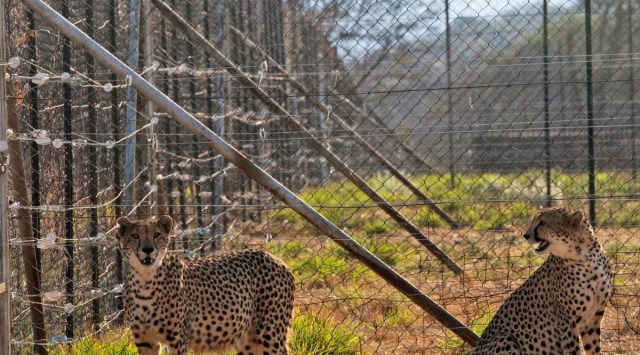India opposes the idea of using fenced habitats for cheetahs, unlike South Africa and Namibia, as it goes against wildlife conservation principles, said the head of the high-level committee overseeing the cheetah reintroduction project on Thursday.
Experts from South Africa and Namibia, assisting with the cheetah reintroduction in India, suggest fencing habitats to prevent poaching, habitat fragmentation, and reduce human-animal conflict. However, Indian experts argue that fences can disrupt natural animal movements and hinder genetic exchange between populations.
“It is completely unfounded to consider fencing habitats. This contradicts wildlife conservation principles. What occurred in a fenced park there (in Africa) will not occur here,” stated Rajesh Gopal, chairman of the 11-member cheetah steering committee.
South African wildlife expert Vincent van der Merwe, closely involved with the project, previously stated that reintroducing cheetahs to unfenced reserves has never been successful. He proposed fencing two or three reserves to serve as source reserves for cheetah populations.
Source reserves are areas providing ideal conditions for species reproduction, while sink reserves have limited resources and less favorable environmental conditions. Experts have raised concerns about space and logistical support in Kuno National Park and recommend relocating cheetahs to other sanctuaries.
The Gandhi Sagar Sanctuary in Madhya Pradesh is being readied as an alternative cheetah habitat by November. Union Environment Minister Bhupender Yadav announced that officers involved in cheetah conservation will be sent on a study tour to Namibia and South Africa.
The central government will provide necessary support, including financial resources, for cheetah protection. Gopal mentioned that seven more cheetahs will be released into the wild by June, following the release of earlier batches from Namibia and South Africa.
Efforts are being made to address the cheetah-human interface by conducting a landscape fragmentation analysis. Gopal emphasized the need to anticipate issues as cheetahs may venture into human settlements.

























+ There are no comments
Add yours